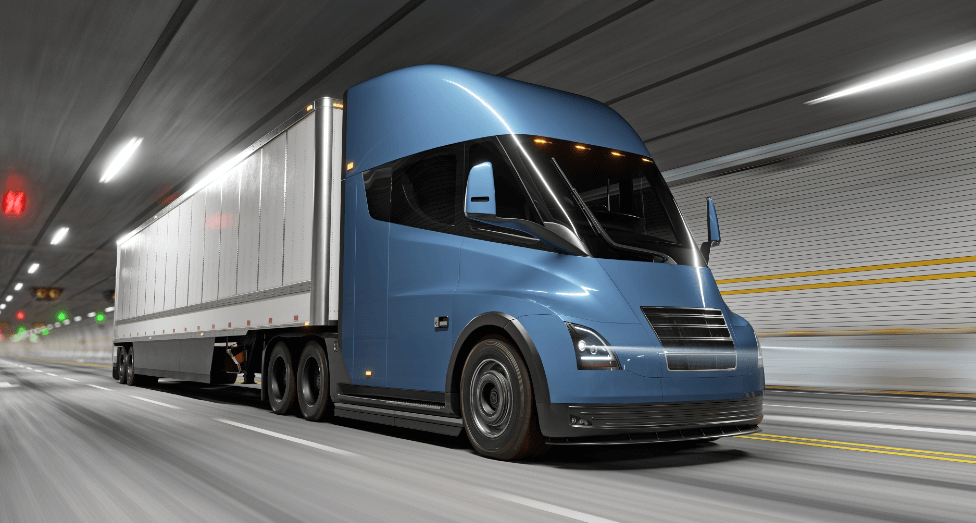How Close Are We to Electric Semi-Trucks?
Electric semi-trucks are already on American roadways, but some limitations haven’t made these trucks widely used for long-haul trucking yet.
Commercial trucks transport most of the nation’s freight from origin to destination. This amounts to nearly 109.3 billion tons of products going across the country by truck. This means many semi-trucks are on the road, but most of them still use diesel fuel and emit massive amounts of harmful emissions into the atmosphere. Electric semi-trucks would be the solution to this problem, but they have many limitations that don’t allow them to be widely used yet.
What electric semis are on the road now?
There are several Class 8 heavy-duty electric semi-trucks already in operation. They have begun to be the trucks most used for regional routes rather than long-haul trucking routes. These trucks are typically only used for distances that are half or less than their driving range.
Electric semi-trucks on the road
- Kenworth T680E – 150 mile driving range
- Peterbilt 579EV – 150 mile driving range
- Freightliner eCascadia – 150-230 mile driving range
- Volvo VNR Electric – 275 mile driving range
- Nikola Tre BEV – 330 mile driving range
- Tesla Semi – 500 mile driving range
Thankfully, battery technology has come a long way, and models with longer range and larger batteries can often charge just as quickly or faster than those with smaller-capacity batteries and shorter driving range. Still, time is money, especially in the trucking industry, and waiting as much as 160 minutes for a battery to recharge isn’t very efficient. Currently, the Tesla Semi charges the fastest, reaching 70% of the full charge in only 30 minutes.
Massive credits for electric semis
Under the Inflation Reduction Act, fleet operators can qualify for up to $40,000 in tax credits for each electric truck that is heavier than 14,000 pounds and placed into service. This law also allows for a $1 billion Clean Heavy Duty Vehicle Program, which provides funding to states, municipalities, tribes, and nonprofit school transportation associations to switch to electric heavy-duty fleets.
Although these credits and the program are impressive, they don’t solve the trouble of long-haul trucking using electricity. Currently, the only way to accomplish this would be to change out the battery pack for a fully charged battery at various locations along the route. This option has been discussed and is currently being studied, but it doesn’t have the necessary support to be a viable solution yet.
Benefits of electric semi-trucks
Zero emissions
The most obvious benefit of transitioning semis to electric power and away from diesel is the positive impact to the atmosphere. A full transition to zero-emissions trucks and power could prevent 66,800 premature deaths, 1,75 million asthma attacks, and 8.5 million lost workdays by 2050. This change would dramatically improve the health of Americans, simply by cleaning up the air.
Improved safety and drivability
Semi-trucks are extremely large and cumbersome on the road. It takes special training and skill to move up to 80,000 pounds across the country. Many trucks have been updated over the years, and newer trucks certainly have advanced systems that make them safer. Manufacturers of electric semi-trucks are putting safety first, adding items such as accident avoidance technology and lane-keeping features to help prevent accidents.
Less noise
Diesel engines are loud, and semi-trucks have some of the largest and loudest diesel engines available. A semi-truck produces nearly 100 dB of noise, which is much louder than the average home. This noise, for prolonged periods, can be damaging to those around the truck. An electric model makes very little sound, making it easy to have a much quieter ride across the country.
Lower operating cost
The initial investment of an electric semi-truck is much more than a regular, diesel-powered rig, but that can change pretty quickly. These electric trucks have a cost of ownership that is 13% lower than diesel models, which can add up to nearly $200,000 per truck for fleet operators. The savings come on the form of fuel costs and lowered maintenance costs, which has become a strong selling point of electric vehicles.
What’s the catch?
Currently, electric semi-trucks cannot drive nearly as far as diesel-powered models, which is the greatest disadvantage. It also takes longer to charge the battery pack to full than to refuel a diesel truck, but regulations require specific breaks for truckers. This means things could even out if charging times and driving ranges improve.
Electric semi-trucks are relatively new to the market, but they have become useful in many areas. As technology improves, the roadways could be filled with electric trucks instead of diesel-powered models.

